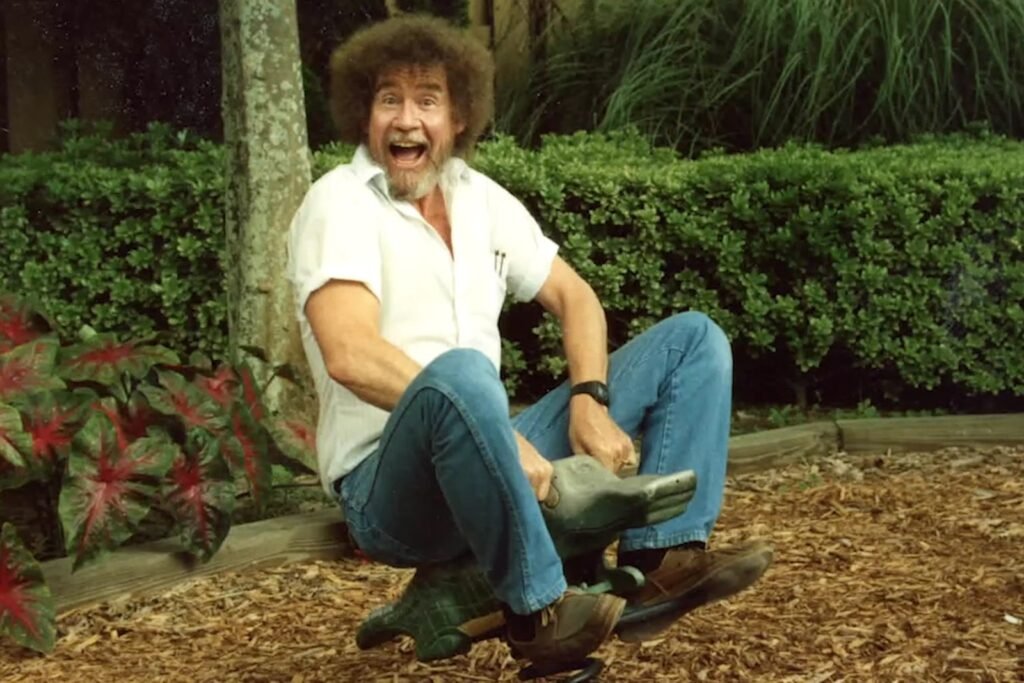
I grew up with The Joy of Painting as part of my life. Whenever I felt overwhelmed or simply needed to slow down, I would turn on Bob Ross. He was more than a painter on a television screen. To me, he was like a therapist with a brush, someone who could quiet my restless mind with every calm stroke of his palette knife or gentle tap of his brush. His smile, his voice, and his pace felt like a world apart from the noise of everyday life.
From 1983 through 1994, Bob Ross welcomed us into his studio and showed us a new way of looking at art. His approach was never intimidating. It was never about perfection. It was about joy, discovery, and trust in the process. His soft voice reminded me of Fred Rogers, who also spoke in a way that seemed to slow time itself. Both men had the same gift. They made you feel seen, heard, and safe.
“We want happy paintings. Happy paintings. If you want sad things, watch the news.” Bob Ross
When Bob painted, it was as if the canvas came alive straight from his imagination. He would turn blank space into mountains, forests, or lakes, and all the while, he reassured us that we could do the same. He believed mistakes were simply “happy little accidents,” and that phrase still lingers in my mind whenever I create something of my own.
Bob Ross painted an astonishing thirty thousand works during his lifetime. But what mattered more was the way he touched people. His videos became a source of comfort, not just as lessons in art but as an experience of peace. Many discovered ASMR through him without even knowing the term. The sound of his brush, the scrape of his knife, the gentle encouragement in his voice all had a way of easing tension. I remember nights when I never reached the end of an episode because his calm presence had already lulled me to sleep. Bob often said how much he loved hearing that, and I believe it was because he knew he had given people something rare: true comfort.
Beyond the canvas, Bob Ross was a man of kindness. He featured rescued animals on his show, he encouraged people to embrace their creativity, and he reminded us to treat ourselves with patience and gentleness. Even today, his lessons are carried forward through reruns and digital platforms, reaching new generations who may not have even been born during his time on television.
When I think back on my own experience of watching him, what I remember most is how he made me feel. Bob Ross taught me that art is not about being perfect or even about being good by traditional standards. It is about allowing yourself to create, to let go, and to see beauty where you did not expect it. His legacy is not just the thousands of paintings he left behind, but the thousands of hearts he touched, including mine.

